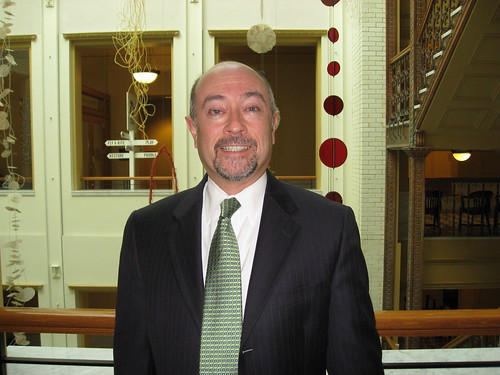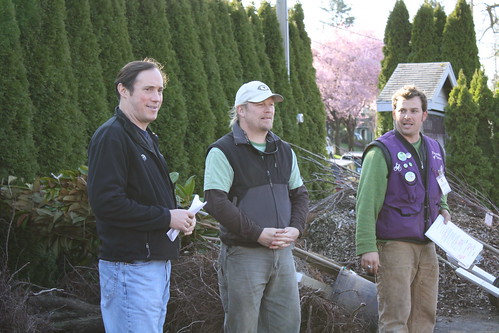City Council and the state of Portland’s urban forest

On Wednesday the Portland City Council received a presentation from the Urban Forestry Commission, unanimously approving their 2009 Annual Report.
Urban Forestry Commission Chairman Brian Krieg, and fellow commissioners Joe Poracsky and David Odom of Friends of Trees, presented to the council on the value of Portland’s urban forest and the upcoming deliberations regarding the Citywide Tree Project (CTP).
Some excerpts from the city council and the urban forestry commissioners:
“It’s interesting that San Antonio has many more trees per square foot than we do,” said Mayor Sam Adams. “As good as we are—especially for Pacific Northwest cities—we got room to improve.”
“I do encourage folks to get involved in the Friends of Trees planting,” said Commissioner Amanda Fritz. “It’s good exercise, it’s fresh air and it’s community building.”

“I’m really proud of the Bureau of Environmental Services’ support for the Friends of Trees program,” said Commissioner Dan Saltzman. “It’s very effective and I think it’s a recognition that trees are indeed a capital resource and should be considered as such.”
“Trees are one of the key things that define this city and its livability,” said Krieg.
“In the period of 1972 to 2002, Portland’s urban forest canopy increased by 1.2 percent,” said Poracsky, attributing the spike in the second half of the graph to “the time frame Friends of Trees has been operating in the city of Portland.”
On the CTP:
Commissioner Nick Fish described the project as “The city’s effort to rationalize the management of Portland’s urban tree canopy.”
“Currently, public and private rules and ordinances are, to put it politely, a bureaucratic pastiche,” added Fish, who oversees Portland Parks & Recreation (PP&R) and its urban forestry division.
“I also want to say that the Citywide Tree policy is my top priority for this year—not only getting a good policy in place that does justice both to homeowners and to trees, but to make sure that we have enforcement of our regulations and rules about cutting down trees, and all too often we’ve had abuses of that,” said Saltzman.
“So I’m particularly looking for a more seamless enforcement of our tree policies.”
Saltzman reiterated again: “Making sure we have adequate funding to make this tree policy work is my top priority for this coming year.”
“This once in every 25-years type of effort will have an immense impact on how we manage our urban forest in the future,” said Krieg. “If nothing else, this entire process shows how integral trees are throughout the fabric of our city.”
Brian Krieg on urban forestry funding and the capitalization of trees:
“We are deeply concerned about potential cuts to urban forestry.”
“Trees are living things and do need our care; however, the expense of maintaining and expanding our urban forest pales in comparison to the substantial benefits it gives us.”
Speaking to the council, Krieg implored, “Each of you oversees at least one bureau or office that has a key role in the management of the urban forest. We encourage your consideration of the urban forest as a whole when making your budget decisions this year.”
“There’s a growing recognition that our green infrastructure can be just as important as our grey infrastructure.
“The commission believes that a shift to recognizing trees as capital assets, recognizing their full value as part of the city’s infrastructure is crucial to maintaining and enhancing the urban forest, in keeping with many of the city’s goals.”
The entire city council session can be seen online, with the urban forestry section beginning around the 45-minute mark.
–Toshio Suzuki
